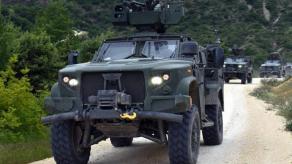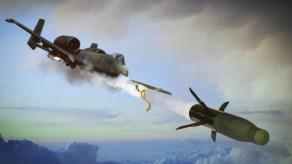Details of drone production in Ukraine suddenly transpired thanks to Oleh Boldyriev (a.k.a. Martin Brest), Project Manager at the state concern Ukroboronprom, recently reformed into JSC Ukrainian Defense Industry.
Boldyriev claimed that the Ukrainian government had not ordered a single drone from Ukroboronprom (UOP), a state-owned conglomerate comprised of the country's biggest arms-making enterprises. In other words, there is no ongoing drone manufacture at the factories of this organization.
Read more: Ukraine's Own Missile of Over 1,000 km Range: Perspectives, Prospects, Technological Basis and What It Will Be Able to Achieve

He shared this statement in the comments to a Facebook post by Ukrainian journalist Oleksandr Surkov. The post itself was critical toward UOP and included the following accusation:
"In year and a half of the war, Husiev's [Ukroboronprom] not only failed to kick off the conveyors [assembly] of typical developments – but even have not offered a single effective solution to the Armed Forces of Ukraine. All they demonstrated at the presentations all this time were not the results of powerful design bureaus' work but indie developments of our Kulibins-singletons which the authorities with spacemen salaries attributed to themselves," the journalist wrote.
Answering that, Martin Brest pointed out that UOP does not administrate state budget funds:
"It [the UOP] cannot (and should not) produce anything the state did not request. Otherwise it would be 'causing monetary damages to the state'. So here we are. All this time since the beginning of the full-scale [war], the Ministry of Defense as the primary customer not just hasn't requested a single drone – it has not shown any interest. According to the law, Ukroboronprom has no right to spend money without the state's request."
This comment was deleted shortly afterward but the screenshot remained, we provide it below in machine translation as confirmation:

Please note that machine translation does not provide a proper level of clarity and correctness. For illustrative purposes only. Image translation by Google Translate
So here's the summary before we start analyzing: Ukrainian state enterprises belonging to the UOP state concern have not launched mass production of drones. This is the result that transpires almost 1.5 years since russia started its unprovoked all-out invasion of Ukraine.
The reasons for that were outlined by both speakers each having reasonable points. Indeed, UOP cannot administrate state money and has no right to make products on its own accord.
It is a logical way of things because it would be irresponsible to let a state-owned company produce whatever it wants at the expense of taxes. Weapons development costs money, too, so the request from the government is necessary to make sure it makes only useful things.
Going back to drone production in particular, here we cannot forget the actively advertised project of creating an unmanned aerial vehicle with a range of 1,000 km announced last November. There were questionable conceptual aspects about it from the very start.

Martin Brest himself was the one to announce that this Ukrainian-developed UAV would be not a suicide drone but a "multipurpose platform" with attack capability. It was a conceptual error since the entire purpose of a suicide drone is to perform a single in a lifespan flight, while a multirole drone must have a long service life. It puts different objectives before the engineers: one is a cheap one-way explosive airplane and the other is a high-reliability aircraft.

Attempts to crossover these two designs will result in either a very expensive winged bomb that cannot be produced quickly and in large quantities, or a one-time reconnaissance drone which makes it ineffective. Defense Express covered this issue in more detail in a dedicated article.
Therefore, it is even for the better that such an idea found no resonance with the Ministry of Defense of Ukraine. It looks like as of autumn 2022, the priorities were already clear. Something that Ukraine lacks but allied countries cannot provide: suicide drones of the russian Lancet type or simplistic loitering munition of the iranian Shahed-136 type.

Replicating an iranian development would be objectively easier and would not need many years of research and development since there have already been a lot of Shahed-136 drones downed by Ukrainian air defense and disassembled to the smallest parts.
The main advantage of this iranian flying ordnance is that it's cheap and can be produced of civilian-use components, from the warhead, of course. Furthermore, there is no need to create control stations, communication systems, and all the other necessary components of "true" drones, even the suicide ones.
Surely, that would need an organized production, and mass production to boot, but it's naturally easier to establish such production at large state-owned enterprises than build new facilities. anyway, neither a Shahed-136 analog nor the promised 1,000-km "multipurpose platform" entered serial production.

On a strategic level, the situation looks even worse. In order to make state companies produce something not in the "indie development" mode, they need a formal request to be issued. Such a request means monetary responsibility, bureaucracy, and accountability for implementation.
That is why Ukrainian Ministry of Defense needs to make clear whether it made specified requests for creating an unmanned aerial system, for example, a Shahed-136 analog, and whether UOP accepted it. If that was the case, how the idea of a 1,000-km UAV emerged and became public. By the way, Martin Brest claimed that the range of 1,000 was a "calculated" value, not based on live testing.
Read more: New russian "Know-How" Called Prometheus Will Turn Tanks and BTRs Into Robots














